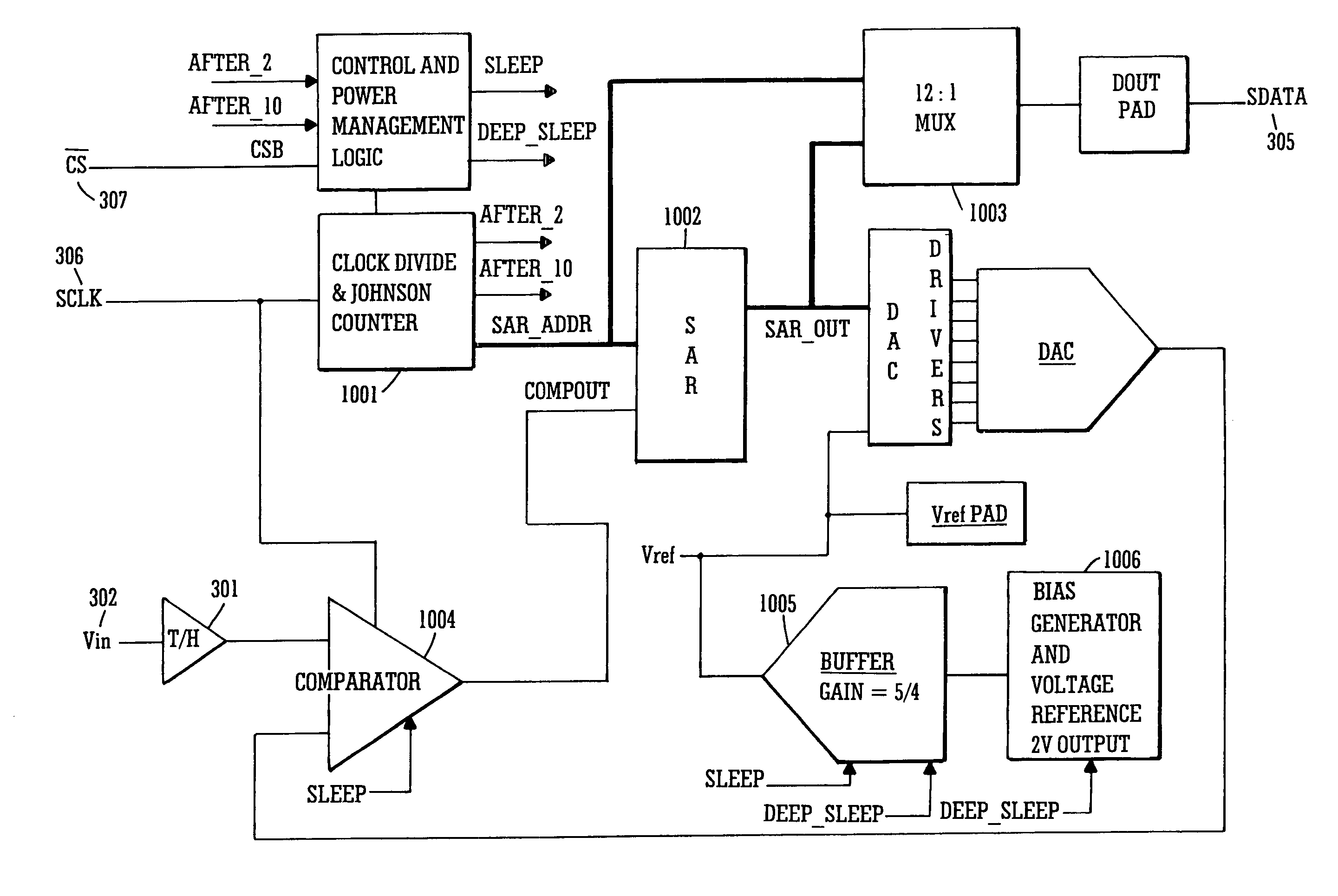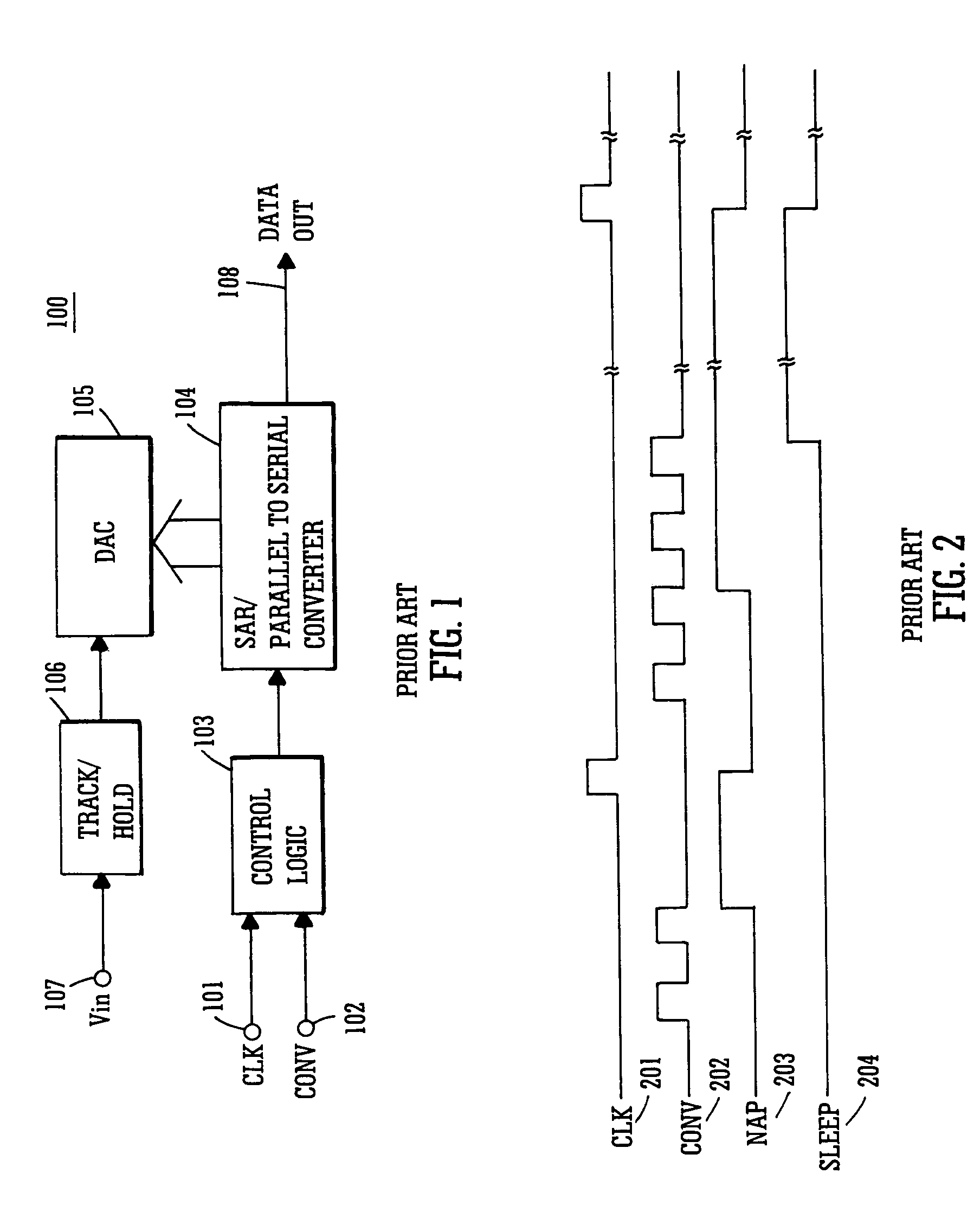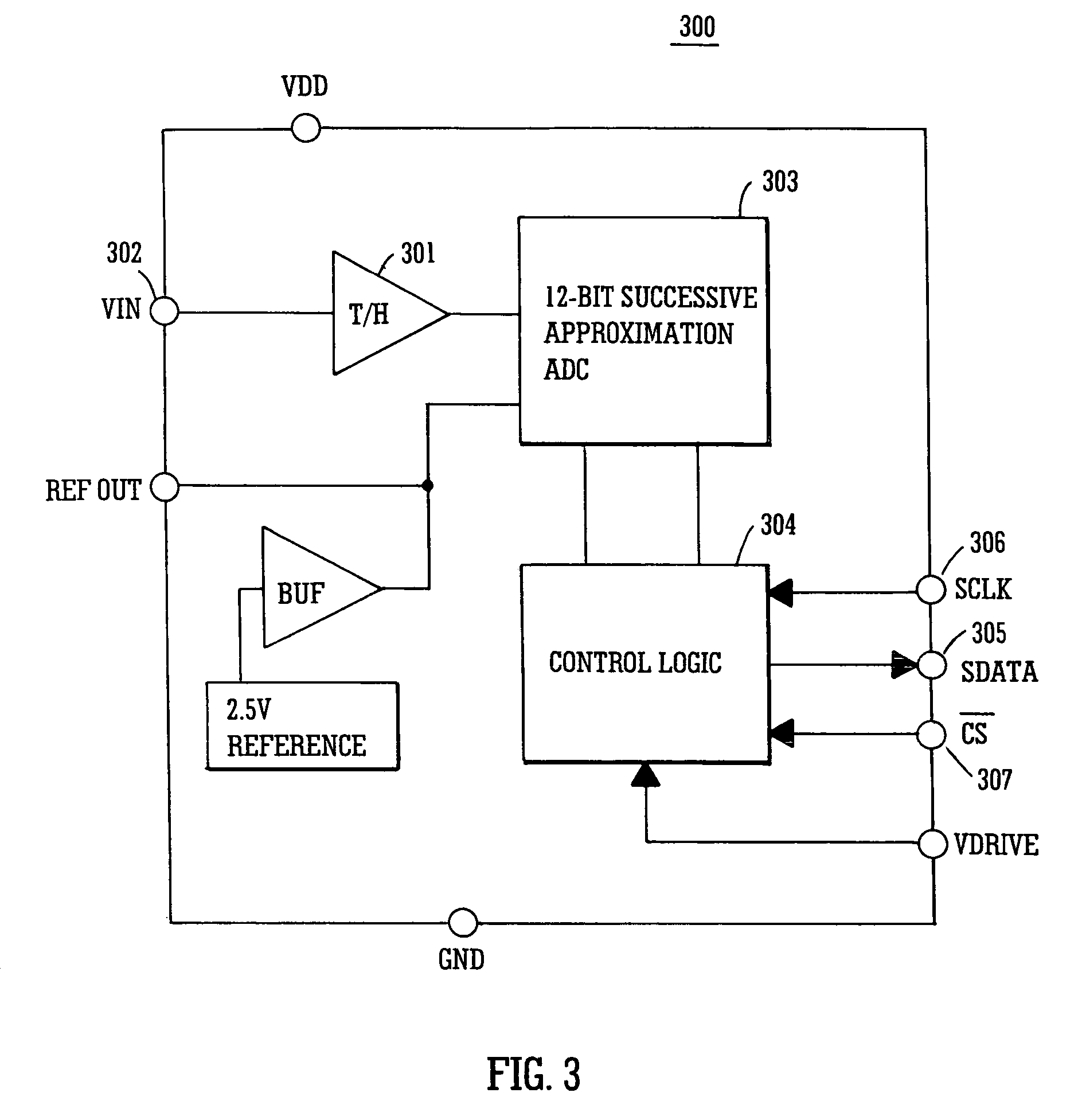Method for placing a device in a selected mode of operation
a device and mode of operation technology, applied in the field of serial communication interfaces, can solve the problems of increasing power consumption, relatively low device throughput in full power-down mode etc., and achieve the effect of reducing device throughput, increasing power consumption, and fast device throughpu
- Summary
- Abstract
- Description
- Claims
- Application Information
AI Technical Summary
Benefits of technology
Problems solved by technology
Method used
Image
Examples
Embodiment Construction
[0049]In accordance with the present invention, a read-only serial interface is used to place an integrated circuit device in a selected operating mode. The present invention provides distinct advantages when compared to mode control methodologies known in the prior art.
[0050]An example of an ADC integrated circuit having operational mode control in accordance with one form of the present invention is shown in simplified block diagram form in FIG. 3, and generally depicted by the numeral 300. The ADC 300 includes a track and hold circuit 301 for acquiring an analog input voltage 302. A 12-bit successive approximation register (SAR) ADC 303 converts the analog input signal 302 into a corresponding digital signal. The integrated circuit 300 includes control logic 304 that controls the operation of the other components of the integrated circuit 300, and also includes power control circuitry for selectively applying / removing power from portions of the device, although this power control...
PUM
 Login to View More
Login to View More Abstract
Description
Claims
Application Information
 Login to View More
Login to View More - R&D
- Intellectual Property
- Life Sciences
- Materials
- Tech Scout
- Unparalleled Data Quality
- Higher Quality Content
- 60% Fewer Hallucinations
Browse by: Latest US Patents, China's latest patents, Technical Efficacy Thesaurus, Application Domain, Technology Topic, Popular Technical Reports.
© 2025 PatSnap. All rights reserved.Legal|Privacy policy|Modern Slavery Act Transparency Statement|Sitemap|About US| Contact US: help@patsnap.com



